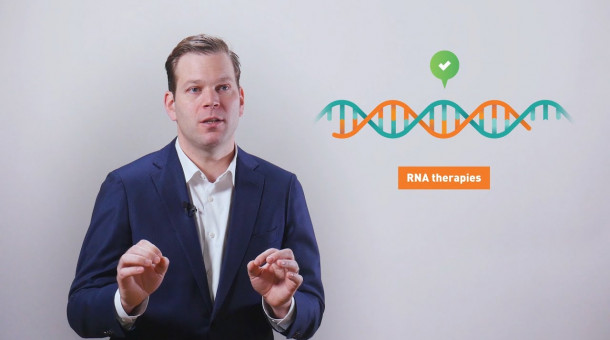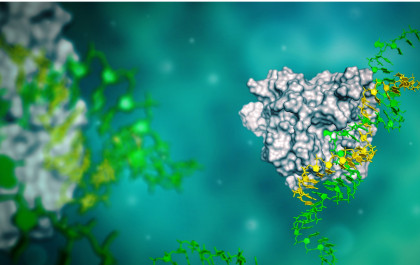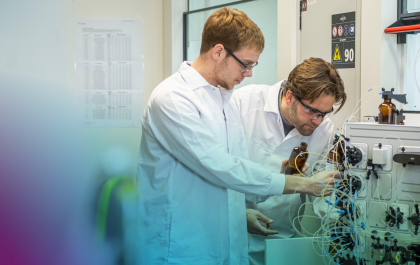An RNA therapy is designed to correct the mistake, or mutation, in the RNA of someone with a disease. By correcting the mistake, the RNA can then be used to create the protein that the cell needs, taking away the underlying cause of the disease.
How RNA therapy works
Watch: How do ProQR's RNA therapies work?
A short introduction to RNA therapies

Why focus on RNA therapies?
RNA therapies can perform the same functions as other types of medicines but have broader applications. If a disease results in a missing or broken protein, an RNA therapy can often correct this. Research at ProQR and other companies has shown promising results and other approved RNA therapies are helping people around the world.
What is RNA?
RNA stands for ribonucleic acid and it is an essential component of all living cells. RNA is used for ‘translation’, the process in which proteins are created in a cell. RNA itself is produced from DNA, in a process called ‘transcription’.
Antisense oligonucleotides
ProQR’s RNA therapies are what scientists call antisense oligonucleotides, or AON or ASO treatment. They consist of short stretches of synthetic RNA that are chemically modified to increase efficiency and uptake into cells. This technique is an established approach to treat genetic diseases and there are approved RNA therapies being used to treat patients today.
Axiomer™ RNA editing technology
Scientists at ProQR have invented a new way to use RNA oligonucleotides to alter RNA. We call this technology Axiomer™. We believe this technology has the potential to treat currently untreatable diseases. It makes use of the cells own editing machinery to edit specific single nucleotides in RNA.


